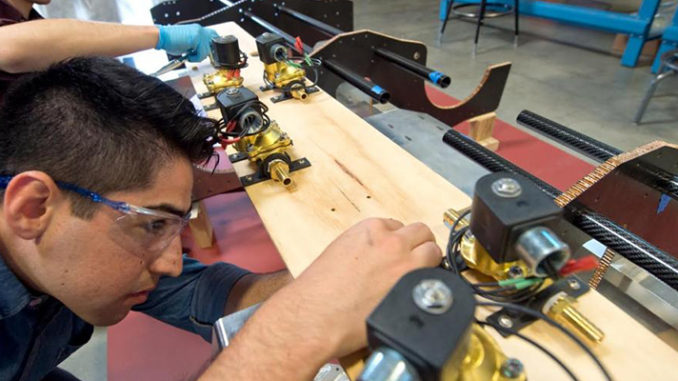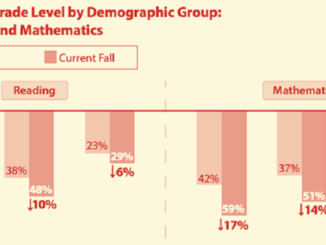
by Morgan Smith
Lab classes have always left Shason Briscoe wracked with anxiety.
The 21-year-old senior at the University of California at Davis wasn’t concerned about the academic rigor or long hours spent in the classroom — it was the uneasiness he felt when his peers and instructors watched him. Briscoe, who is African American, studies computer engineering at UC Davis, where black students constitute fewer than 3 percent of students in the program. Often, he is the only black student in his classes.
“It’s like there’s a magnifying glass on you,” he said. “If you don’t know the answer to something, you’re watched, like you have something to prove, and you can’t shine on your own merits as much.”
For years, college administrators have worked to attract minority students like Briscoe — especially Latino and black students — to science and technology fields. But the retention of those students presents another hurdle. Black and Latino college students transfer or drop out of STEM programs — science, technology, engineering and mathematics — at higher rates than their white peers, according to a recent study published in the journal Education Researcher.
Authors of the study used federal data from the National Center for Education Statistics to look at more than 5,600 black, Latino and white students who enrolled in college for the first time in the 2003-2004 academic year. The data included students enrolled in four-year institutions and those who began at two-year colleges and transferred to four-year schools.
The researchers found that students entered the programs at relatively equal numbers: About 19 percent of the white students declared as STEM majors, compared with 20 percent of Latino students and 18 percent of black students.
Yet black and Latino students changed majors at higher rates than their white peers. About 37 percent of Latino and 40 percent of black STEM students switched majors as undergraduates, compared with 29 percent of white STEM students.
Dropout rates varied among the groups, too. About 20 percent of Latino and 26 percent of black STEM majors left their institutions without earning a degree, while 13 percent of white STEM majors dropped out, according to the study.
This trend wasn’t evident in other competitive fields, the report found. Among business majors, similar rates of black, Latino and white students switched majors.
Previous studies have suggested this trend without comparing the dropout rates of minority students in STEM to those who drop out of other disciplines, said the lead author of the study, Catherine Riegle-Crumb, an associate professor in the University of Texas at Austin’s Department of Curriculum and Instruction.
The researchers discovered a strong interest among black and Latino high school students in pursuing a STEM degree.
“If there’s demonstrated, strong interest in STEM among black and Latino youth, why would you see higher departure rates for these students?” the professor said. “It’s not about interest or academic ability. So what causes this?”
The study didn’t identify a cause, but the researchers — who also included Yasmiyn Irizarry, an assistant professor of African and African diaspora studies at the University of Texas, and Barbara King, assistant professor of teaching and learning at Florida International University — offered possibilities. Discrimination and bias in science and technology often hinder minority students’ academic success, Riegle-Crumb said.
They considered, too, that black and Latino students are more likely to come from low-income families and have less access to academic resources that help prepare students for college.
Deana Crouser, a 28-year-old senior at the University of Washington studying oceanography, is one of the few Latino students in her program. Crouser said feelings of exclusion and microaggressions — defined as indirect, subtle and unintentional forms of discrimination — made it hard to concentrate on her work.
When she enrolled in the program, administrators emphasized that she would need friends and mentors to perform well. But it was hard to find a community when Latinos account for 10 percent of students in the program, she said.
“I spent too much time in my head feeling like I didn’t belong, or wasn’t smart enough, that I couldn’t concentrate on my work,” Crouser said.
The study’s findings didn’t surprise Darryl Dickerson, the associate director of the minority engineering program at Purdue University and president of the National Association of Multicultural Engineering Program Advocates.
Dickerson said colleges and universities can address the exodus of black and Latino student by focusing less on recruitment and more on retention.
“Administrators need to talk to students, figure out what’s going on in classrooms and how they add to the exclusion these students feel,” Dickerson said. “We have to hone in on the reasons they’re leaving and directly address these issues before solving anything else.”
Morgan Smith covers national education issues for The Washington Post.



